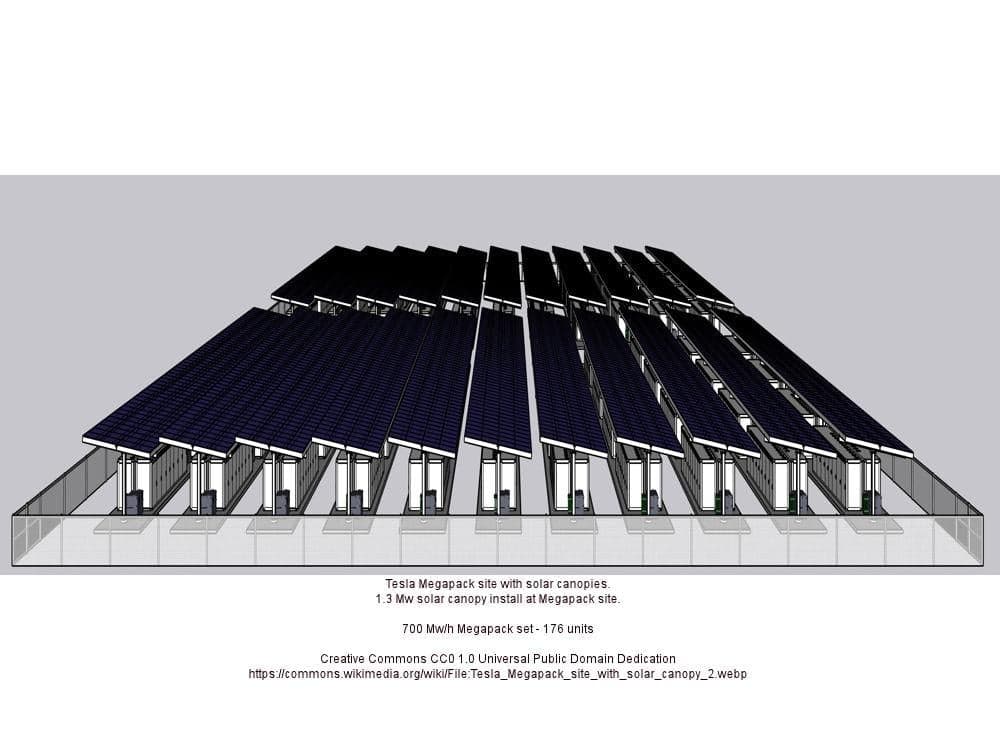The two defining characteristics of electric grid-scale storage systems are the amount of power they can deliver continuously (MW, GW, TW) and the total amount of power they can deliver before they are depleted (MWh, GWh, TWh). For example, a storage system used to backup a 10 MW generator system must be able to deliver 10 MW if that generator system is not operating for any reason. If the storage system is required to provide 10 MW backup for up to 4 hours, it must have a capacity of 40 MWh. Such storage systems are typically referred to as 4-hour systems, though they are capable of providing power for a longer period of time if the demand on the system is below its rated capacity.
The most common storage system currently used in grid scale applications is the Tesla Megapack. The Megapack is classed as a short-duration storage system. The Megapack is available in both a 4-hour and a 2-hour configuration. In the 4-hour configuration it has a storage capacity of 19.6 MWh and can deliver power at a rate of up to 4.9 MW. In the 2-hour configuration, the storage capacity decreases to 10.3 MWh and the power delivery rate iincreases to 9.6 MW. The Megapack 4-hour configuration has an estimated installed cost of $8,128,870, while the 2-hour configuration has an estimated installed cost of $9,759,770. This compares with an installed cost of approximately $5,000,000 for a 5 MW utility scale solar photovoltaic array, which the Megapack could backup for 4 hours. The minimum time required to recharge the Megapack is approximately equal to the discharge time, though the recharge time might be much longer, depending on the availability of surplus power. However, the storage system must be recharged before it can be used again.
There is research underway to develop grid-scale storage systems with larger storage capacity relative to their power output, referred to as medium-duration storage systems. However, these systems are not yet defined.
The California Energy Commission (CEC) has recently funded a grant to Form Energy for construction of a long-duration storage system The system is a 5 MW, 500 MWh system, so it could backup a 5 MW utility-scale solar array for up to 100 hours. Form Energy estimates that this storage system can achieve storage capacity of ~3 MW / 300 MWH per acre in utility-scale installations. This storage technology is an iron/air battery system, which functions based on reversible rusting. While the system is capable of delivering power over a longer time than Li-ion battery systems such as the Tesla Megapack, it also takes far longer to recharge.
The largest grid-scale storage system currently operating in the US is the Bath County Pumped Storage Station in Virginia, which has a generating capacity of ~3000 MW from 6 turbines and a storage capacity of 24,000MWh. This system could backup a 5 MW solar array for 4800 hours or a 500 MW generating system for approximately 48 hours. At full generating capacity of 3000 MW, the system could operate for approximately 8 hours.
